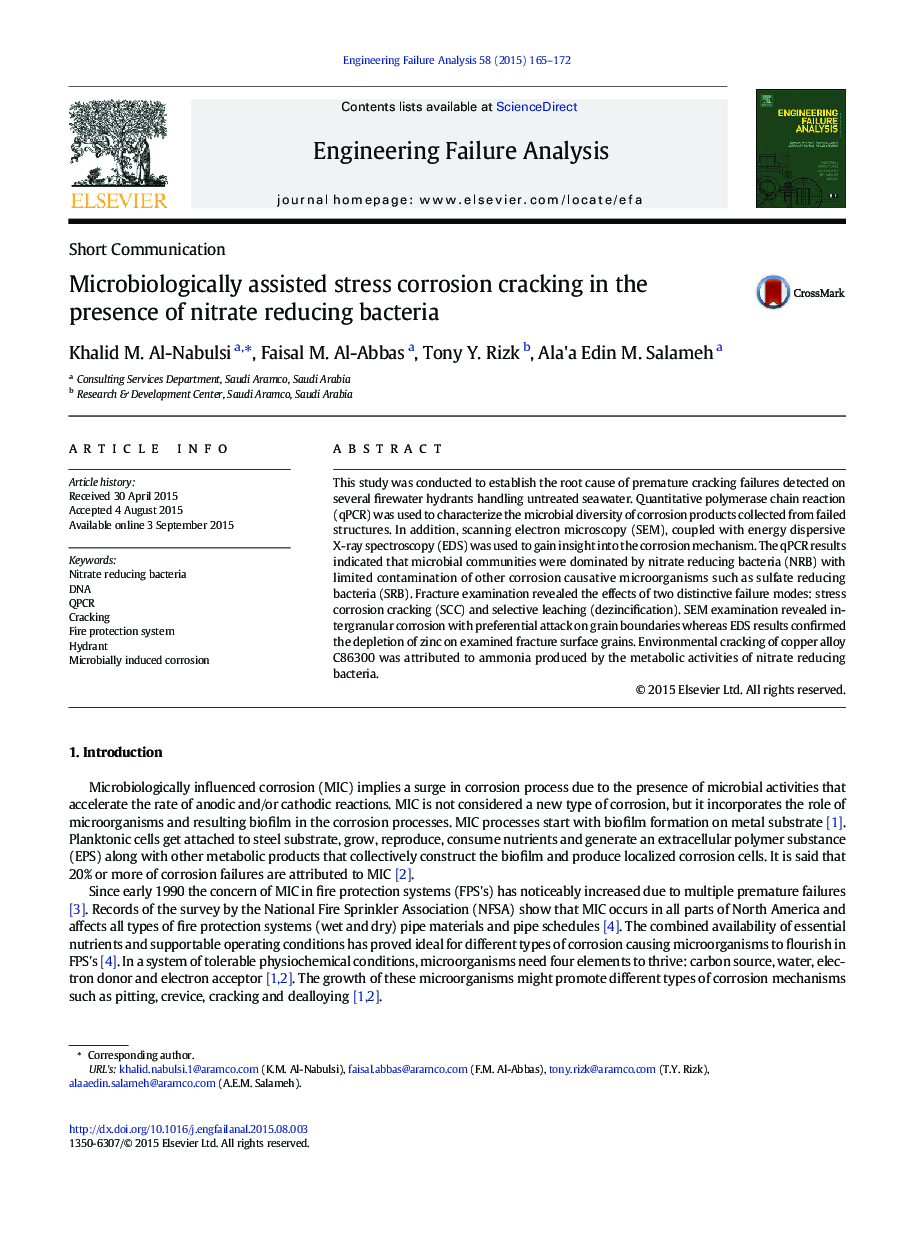| کد مقاله | کد نشریه | سال انتشار | مقاله انگلیسی | نسخه تمام متن |
|---|---|---|---|---|
| 769319 | 897382 | 2015 | 8 صفحه PDF | دانلود رایگان |
• This study was conducted to establish the root cause of premature cracking failures detected on several firewater hydrants handling untreated seawater.
• Quantitative polymerase chain reaction (qPCR) was used to characterize the microbial diversity of corrosion products collected from failed structures.
• Scanning electron microscopy (SEM), coupled with energy dispersive X-ray spectroscopy (EDS) was used to gain insight into the corrosion mechanism where fracture examination revealed the effects of two distinctive failure modes; stress corrosion cracking (SCC) and selective leaching (dezincification).
• The microbial communities were dominated by nitrate reducing bacteria (NRB) with limited contamination of other corrosion causative microorganisms such as sulfate reducing bacteria (SRB) where environmental cracking of copper alloy was attributed to ammonia produced by the metabolic activities of nitrate reducing bacteria.
• Detection of the denitrifying bacteria is a cause of concern. Material upgrading and periodic flushing of installations with a potent anti-bacteria agent are among the options being considered.
This study was conducted to establish the root cause of premature cracking failures detected on several firewater hydrants handling untreated seawater. Quantitative polymerase chain reaction (qPCR) was used to characterize the microbial diversity of corrosion products collected from failed structures. In addition, scanning electron microscopy (SEM), coupled with energy dispersive X-ray spectroscopy (EDS) was used to gain insight into the corrosion mechanism. The qPCR results indicated that microbial communities were dominated by nitrate reducing bacteria (NRB) with limited contamination of other corrosion causative microorganisms such as sulfate reducing bacteria (SRB). Fracture examination revealed the effects of two distinctive failure modes: stress corrosion cracking (SCC) and selective leaching (dezincification). SEM examination revealed intergranular corrosion with preferential attack on grain boundaries whereas EDS results confirmed the depletion of zinc on examined fracture surface grains. Environmental cracking of copper alloy C86300 was attributed to ammonia produced by the metabolic activities of nitrate reducing bacteria.
Journal: Engineering Failure Analysis - Volume 58, Part 1, December 2015, Pages 165–172
